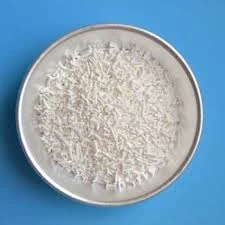
acetic acid is used as a food preservative
Acetic Acid as a Food Preservative An In-Depth Look
Acetic acid, a colorless liquid organic compound with a pungent smell and a strong sour taste, is best known as the primary component of vinegar. Beyond its culinary uses, acetic acid plays an essential role in food preservation. This natural preservative helps inhibit the growth of bacteria, yeasts, and molds, extending the shelf life of various food products.
The antimicrobial properties of acetic acid are primarily attributed to its ability to lower pH levels in food. Most spoilage bacteria and pathogens thrive in neutral to slightly alkaline environments. By adding acetic acid, the acidity of the food increases, creating an inhospitable environment for these microorganisms. This is particularly effective in pickling vegetables, where the high acidity of vinegar effectively preserves the food while imparting a unique flavor.
One of the most widely recognized uses of acetic acid is in pickled products. From cucumbers to beets, the pickling process often employs vinegar, which typically contains acetic acid at concentrations ranging from 4% to 8%. This method does not just enhance flavor but also provides safety by reducing the risk of foodborne illnesses. The acidic environment prevents the growth of harmful bacteria, such as Escherichia coli and Salmonella, which can cause serious health issues if ingested.
In addition to pickling, acetic acid is utilized in various food applications. It can be found in sauces, dressings, and marinades. For example, many salad dressings rely on acetic acid for flavor and preservation. Acetic acid also serves to enhance the taste profiles of prepared foods, making it a valuable ingredient that goes beyond mere preservation.
acetic acid is used as a food preservative

In the commercial food industry, acetic acid is often added to processed foods to improve shelf life. Products such as mayonnaise and certain dairy items can benefit from the inclusion of this acid, reducing spoilage and ensuring that consumers receive fresher products. Furthermore, acetic acid can help prevent rancidity in fats and oils, which can compromise the flavor and safety of food products.
Another significant advantage of acetic acid as a preservative is its natural origin. With growing consumer demand for clean-label products, food manufacturers are increasingly exploring alternatives to synthetic preservatives. Acetic acid fits the bill, as it is a naturally occurring substance that is recognized as safe by food safety authorities, including the U.S. Food and Drug Administration (FDA) and the European Food Safety Authority (EFSA).
While acetic acid is effective in food preservation, it is essential to use it properly. The concentration and method of application can significantly impact its efficacy. For example, home canning requires precise measurements and techniques to ensure food safety, preventing contamination and spoilage.
In conclusion, acetic acid is not just a staple in kitchens; it is a versatile and effective food preservative. Its ability to inhibit microbial growth and acidify foods makes it invaluable in preserving the safety and quality of various products. As consumers become more health-conscious and favor natural ingredients, the role of acetic acid in food preservation will likely continue to grow, demonstrating its significance in both culinary and food manufacturing applications.
-
Understanding Synthetic Rubber OptionsNewsApr.27,2025
-
Trichloroisocyanuric Acid: Essential for Clean and Safe WaterNewsApr.27,2025
-
Sodium Dichloroisocyanurate: Key to Safe Water TreatmentNewsApr.27,2025
-
Sodium Acid Pyrophosphate: Essential in Modern Food ProcessingNewsApr.27,2025
-
Essential Water Treatment ChemicalsNewsApr.27,2025
-
Denatured Alcohol and Its Industrial UsesNewsApr.27,2025
-
The Versatile Uses of Sodium BicarbonateNewsApr.24,2025
Hebei Tenger Chemical Technology Co., Ltd. focuses on the chemical industry and is committed to the export service of chemical raw materials.
-

view more DiethanolisopropanolamineIn the ever-growing field of chemical solutions, diethanolisopropanolamine (DEIPA) stands out as a versatile and important compound. Due to its unique chemical structure and properties, DEIPA is of interest to various industries including construction, personal care, and agriculture. -

view more TriisopropanolamineTriisopropanolamine (TIPA) alkanol amine substance, is a kind of alcohol amine compound with amino and alcohol hydroxyl, and because of its molecules contains both amino and hydroxyl. -

view more Tetramethyl Thiuram DisulfideTetramethyl thiuram disulfide, also known as TMTD, is a white to light-yellow powder with a distinct sulfur-like odor. It is soluble in organic solvents such as benzene, acetone, and ethyl acetate, making it highly versatile for use in different formulations. TMTD is known for its excellent vulcanization acceleration properties, which makes it a key ingredient in the production of rubber products. Additionally, it acts as an effective fungicide and bactericide, making it valuable in agricultural applications. Its high purity and stability ensure consistent performance, making it a preferred choice for manufacturers across various industries.











